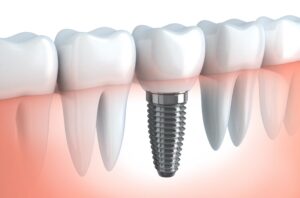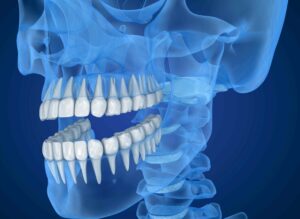Header logo
header top contact widget
Arthritis (RA)
How the “Bad” Bacteria in the Mouth Can Lead To Serious Health Problems
Posted on Aug 08, 2023 by William J. Claiborne, DDS MS
The human body is a fascinating structure. It seems every year there are new findings that show just how complex and amazing it is.
 Recently, one of the biggest areas of interest has been the study of microbiome in the body. Once thought to be icky little cesspools, these colonies of microorganisms are now seen as having an important role in our health. For example, the microbiome in the gut has been shown to aid in digestion and it’s now seen that skin microbiome may potentially help people overcome conditions like acne and eczema.
Recently, one of the biggest areas of interest has been the study of microbiome in the body. Once thought to be icky little cesspools, these colonies of microorganisms are now seen as having an important role in our health. For example, the microbiome in the gut has been shown to aid in digestion and it’s now seen that skin microbiome may potentially help people overcome conditions like acne and eczema.
As a periodontist, I’ve followed research in how microbiome is being recognized for having a positive role in oral health. While bacteria that convert sugar to acid are the driving force behind tooth decay, this means that those critters in our mouths are not always bad guys.
There are about 700 different species of bacteria in your mouth. Some can be “bad,” yet the good bacteria are able to give our overall health a “leg up” in certain regards.
Certainly, having a clean, healthy mouth helps to prevent cavities and periodontal (gum) disease. However, read on to learn how the health of your mouth can contribute to your overall health to a rather significant extent.
Over the years, numerous studies have been able to pinpoint how diseases – such as heart disease, diabetes, arthritis, and more – might be triggered. The “trigger” seems to consistently link back to internal inflammation.
Inflammation in the body has been shown to set actions into play that cause the onset or worsening of a wide variety of health problems. Periodontal (gum) disease is a chronic inflammatory disease. This means the bacteria attacking gum tissues are in a consistently active state.
When the bacteria of gum disease enter the bloodstream (through tears in weakened gum tissues), it can create inflammatory triggers far beyond the mouth. This bloodborne inflammation, in turn, results in higher risks for heart disease, stroke, diabetes, preterm babies, arthritis, respiratory diseases and even impotency.
How can this occur?
In chronic inflammation, the body’s defense mechanism becomes stuck in the ‘on’ position. This sets off a chain of reactions that alter the helpful response of the immune to a harmful one. When an area in the body stays in an inflammatory setting, damaging reactions can occur.
Once in the bloodstream, several species of harmful gum disease bacteria can add to existing inflammation, including that in the arteries, where it can lead to heart attack and stroke.
In one study of 265 stroke patients, researchers found that patients with gum disease had twice as many strokes (due to thickening and hardening of brain arteries) as patients without. Additionally, patients with gum disease were three times as likely to have a stroke involving blood vessels in the back of the brain, which controls vision, coordination and other functions.
In a separate study of over 1,100 patients who had not experienced a stroke, researchers noted that 10% had severely blocked brain arteries. They also found that patients with gum inflammation were twice as likely to have moderately severe narrowing of brain arteries.
Another example is in the similarities between tissues of gum disease and those taken from arthritic joints. Studies show that gum disease is not only a risk factor for arthritis (both are inflammatory diseases), one can contribute to the other. Thus, gum disease is a risk factor for developing RA and arthritic patients have a greater risk for gum disease.
Additionally, people with diabetes are more likely to have periodontal disease than people without it, likely because they’re more susceptible to contracting infections overall, according to the American Academy of Periodontology.
Studies also show that pregnant women with periodontal disease have a greater risk of having pre-term and low birth weight babies. These indications have been found in amniotic fluid and in fetal cord blood samples of infants.
Findings show, too, that the bacteria of periodontal disease may contribute to a higher risk of pancreatic cancer. For years, researchers at the National Cancer Institute and the American Cancer Society have conducted cancer prevention and screening studies.
By studying oral samples, notably higher levels of two types of oral bacteria were measured in study participants with pancreatic cancer. One oral bacteria was found to create a 50% increased risk for pancreatic cancer and the second oral bacteria led to a 59% greater likelihood.
Chronic inflammation, in any area of the body, is a health risk that poses severe health challenges now highly recognized in the medical field. Not surprisingly, we occasionally see patients who have been advised by their surgeons to have their gum health checked prior to surgery. This proactive measure is to reduce risk factors that could complicate surgical outcome.
Your body’s natural defenses along with good oral hygiene — such as daily brushing and flossing — helps to keep bacteria under control. Also, people should readily recognize the signs and symptoms of periodontal disease.
Healthy gums fit snugly around the base of teeth and be a light pink color. Although the initial stage of gum disease (gingivitis) may exist without obvious symptoms, common signs of gum disease include:
• Swollen or puffy gums
• Bright red or purplish gums
• Gums that feel tender or bleed easily
• Spitting out blood when brushing or flossing
• Frequent or persistent bad breath
• Pus pockets between some teeth and gums
• Loose teeth or a change in the way teeth fit
• Painful chewing
• Gums that pull away from teeth or are sensitive to heat and/or cold
Maintaining good at-home oral hygiene is easy and takes just minutes a day. Brush twice a day (two minutes each time) and floss daily. Drink plenty of plain water throughout the day and limit sugar. Have dental cleanings every six months and follow your dental hygienist’s recommendations to keep oral bacteria at minimal levels between visits.
If you suspect you have gum disease or have delayed (or avoided) having regular dental care, call our Asheville periodontal dental office to schedule an examination. Or, ask to begin with a consultation appointment. During this time, we can discuss any concerns and I’ll answer your questions. Call 828-274-9440.
Let’s help you achieve a healthy, confident smile that adds to the well-being of your overall health!
Sources:
https://www.jnj.com/innovation/4-things-scientists-know-about-the-bacteria-in-your-mouth
https://www.nih.gov/news-events/nih-research-matters/identifying-new-contributor-tooth-decay
https://pubmed.ncbi.nlm.nih.gov/26474422/
http://www.health.harvard.edu/press_releases/heart-disease-oral-health
https://www.cancer.org/research/cancer-facts-statistics.html
AI in Dentistry – A Good Thing.
Posted on Jul 05, 2023 by William J. Claiborne, DDS MS
I remember when microwave ovens first appeared on the market. My mom wouldn’t even go near one in operation. Now, we know how to use them and the good things that come from their use.
Shoot forward 50 years and, like it or not, AI (artificial intelligence) is here. Self driving cars and round vacuums that move along floors are no longer Jetson-like imaginings. They’re blending into our lives in ways that are beneficial and non-threatening.
Like the microwave oven easing its way into day-to-day living, it’s logical that some people fear AI as a bad thing. After all, movies made decades ago prompted a vision of robots meandering among the human race as a new, threatening species.
As an Asheville periodontist, I’ve already seen – and incorporated in use – the positive aspects of breakthrough technology. Understanding its detection capabilities and accuracy, I’m particularly excited about the potential AI brings to the medical and dental fields.
You may be surprised to know that dentists are already beginning to turn to AI technology to quickly and accurately detect and prevent periodontitis, decay, bone loss and other gum health issues.
For example, a medical technology company in Boston has developed an AI platform that can assess X-ray images to an extent of over 50 times what can be detected by dentists through visual reviews. This allows dentists to give more effective treatment recommendations for patients while supporting the potential to avoid (or minimize) existing problems from developing or worsening.
For patients, AI assessments can also be reassuring. For those who anticipate particular treatment needs – a root canal, for instance – these assessments can zero in on exact issues so treatment planning is as conservative and as minimal possible, while being fully effective for the particular need.
Not just in medical and dental offices, but we’ll likely see AI used mainstream in many sectors. It can optimize accuracy in organizational materials, financial and budget projections, construction, farming, etc. For those of us in the periodontal dental field, AI has a vast potential to greatly improve the oral – and overall – health of our population.
Gum disease affects over 47% of American adults. With the help of AI, we can identify a higher percentage of cavities in earliest development stages while cutting the rate of misdiagnosis in half (thus curtailing over-treatment, in some cases). AI analysis will also aid in early detection of abscesses, lesions and oral diseases. It can prove to be a remarkable asset in catching oral cancer, helping to increase its poor survival rate or minimize the severity of treatment.
Through decades of research and extensive studies, keeping good oral health has been shown to be a supporting factor in good overall health. By keeping the “bad” bacteria in the mouth to manageable levels, the immune system operates more efficiently. Too, risk of medical complications from diabetes, heart disease and other illnesses can be significantly decreased.
It is suspected that many people are unaware that they even have periodontal (gum) disease, mainly because gum disease often begins with no obvious symptoms of its presence. Then, once symptoms appear (such as seeing blood in the sink when brushing), people may shrug this off as normal, or merely a sign they are being thorough in their brushing technique.
Gum disease is a particular problem for our aging population. The normal aging process dries out our hair, skin, and yes, the mouth. When the mouth is dry and saliva flow is insufficient, bacteria accumulation is more likely. This, in turn, provides a more welcoming environment for bacteria growth.
Too, many medications on the market – both prescription and OTC – have a side effect or oral dryness. This is double trouble for seniors, who already have “dry mouth” to combat. However, for people who smoke and/or are consumers of caffeine, they fall into this risk group as well.
Caffeine is present in coffee, tea, most colas, and (darn!) even chocolate. It can be in high concentrations in things like energy drinks and “power” bars. Caffeine-fortified foods can surprisingly include marshmallows, some cereals (and breakfast bars), jelly beans, gummy bears and frozen waffles.
Although AI will be an added perk to diagnosing oral health problems, it is the dentist and the patient together who have much more important roles. While regular dental check-ups help to remove existing buildup on teeth (known as plaque, which can harden into tartar), at-home care is what helps to prevent problems between visits.
It is first important to know the signs and symptoms of the various stages of gum disease. Warning signs include:
• Red, swollen, or tender gums or other pain in your mouth
• Bleeding while brushing, flossing, or eating hard food
• Gums that recede or pull away from the base of teeth
• Loose or separating teeth
• Pockets of pus between gums and teeth
• Sores in the mouth
• Persistent bad breath
• A change in the way your teeth fit together when you bite
• A change in the fit of partial dentures
The dentist-patient relationship can never be replaced by AI. Once you find a dental office where you feel respected, comfortable, and have total confidence, technology itself is merely an add-on.
If you have not had regular dental care or feel you have symptoms of gum disease (as listed above), it is recommended that you renew your commitment to your smile and your overall health with a complete periodontal dental examination.
During this time, your periodontist will note any areas that are diseased or at risk of developing such. He or she will explain recommended treatment and discuss a comfortable pace for your individual needs. Payment plans can also be discussed after determining the type of treatment most appropriate for your care.
If dental fear or anxiety has kept you from regular dental care, our NW Carolina periodontal dental office has a reputation for helping adults overcome the obstacles it can pose. Please share your concerns prior to or during your examination appointment. We offer several comfort options (in addition to our reputation for a gentle touch) and can explain what may be best for your care. We offer oral and IV sedation (twilight sleep), which are administered safely and with advanced monitoring equipment.
Too, our vast array of advanced technology often helps to minimize treatment while optimizing comfort. Please learn more about these features at: BiltmorePerio-Technology
We can’t stop progress, nor should we resist it. While most anything can be used with ill-will, I see AI in dentistry as a positive part of providing exceptional oral health to our patients – and our adult population!
But first, we must get you into the office. And that’s your decision. We don’t have technology to coax you in and hope you will take that step on your own before problems force you into a dental chair (which is often the case, unfortunately).
Call 828-274-9440 for an appointment or to have your initial questions answered.
Sources:
https://www.perio.org/for-patients/gum-disease-information/
3 At-Home Tips To Lower Risk of Tooth Loss, Gum Disease
Posted on Jun 02, 2023 by William J. Claiborne, DDS MS
Gum disease is the nation’s leading cause of adult tooth loss and one of the most prominent diseases in the U.S., with over 47% of adults having some level.
Yet, this disease is far more devastating than many realize. When oral bacteria build to a point beyond the ability of the immune system to manage, inflammation sets in. This inflammation continues to build as the oral bacteria become infectious.
Oral bacteria is the cause of cavities, gum disease, and a long list of health problems as many years of research has shown. Oral bacteria can become bloodborne through tears in diseased gum tissues, allowing it to travel throughout the body. This can trigger inflammatory reactions that have serious consequences far beyond the mouth.
Because the initial symptoms of periodontal (gum) disease are silent, the early stages of the disease can be perplexing since patients don’t feel anything is wrong. However, like most diseases that form in our bodies, we don’t feel or see anything when they first begin. This allows the disease to progress without our knowledge.
Unfortunately, people tend to delay treatment until the symptoms of periodontal disease are obvious and uncomfortable. These include tender and swollen gums that bleed easily when brushing, consistent bad breath, and gums that are red in color rather than a healthy pink. As gum disease progresses, pus pockets form around teeth as bacterial accumulate. Eventually, teeth will loosen and need to be removed.
Although gum disease can begin without any obvious symptoms, once it exists, progression occurs in three stages (without treatment).
• Gingivitis – As the initial stage of gum disease, inflammation is triggered by plaque buildup at the gum line. When daily brushing and flossing fail to thoroughly remove plaque, toxins form that cause irritation to the gum tissues. Once signs emerge, they may include seeing blood in the sink when brushing or having sore, swollen gums. At this stage, however, damage may be reversed with prompt response.
• Periodontitis (gum disease) – As the disease progresses, the bone structures and fibers that support teeth are damaged by the destruction of infectious oral bacteria. At this stage, inflamed gums form pockets below the gum line, filling with bacteria-laden plaque.
• Advanced Periodontitis – In the advanced stage of gum disease, fibers and bone supporting natural teeth are destroyed. This can cause teeth to shift or loosen, requiring aggressive treatment to prevent tooth loss. Eventually, some teeth may require removal.
As devastating as tooth loss can be to one’s overall health, the bacteria of gum disease can enter the bloodstream. Research has shown this infectious bacteria can trigger inflammatory reactions elsewhere in the body, correlating to heart disease, stroke, high blood pressure, some cancers, diabetes, arthritis, impotency, preterm babies and more.
Obviously, it is important that people are diligent in the care of their oral health. Yet, statistics in America along these lines are not impressive. The Center for Disease Control’s Division of Oral Health cites that 1 out of every 2 American adults 30 and over has periodontal disease. They also shared that periodontal disease is higher in men than women (56.4% vs. 38.4%) with high prevalence rates among smokers (64.2%) and adults 65+ (70.1%).
As a proponent of dental implants to replace lost teeth, I must acknowledge that there is no perfect replacement for natural teeth. Natural teeth provide a stable, dependable means to chew and enjoy food while their tooth roots keep the jaw bones that support them nurtured and stimulated.
In addition to restoring chewing strength and stability, the dental field is a proponent of dental implants largely because of their ability to halt bone loss. Referred to as ‘resorption,’ this is the shrinking of bone mass, which occurs when tooth roots are no longer present in the jaw bone.
Once resorption begins, it continues at an ever-increasing rate with each year. For those who wear a denture or partial, the pressure an appliance places on the bone ridge accelerates it further. Sleeping in an appliance puts pressure on the ridge 24/7, speeding up the rate of bone loss even more.
Resorption can even be seen; it ages one’s appearance far beyond their actual years. As the jaw bone thins, deep wrinkles form around the mouth. Over time, the mouth appears to have sunk into the face. Jowls form and the chin becomes more pointed (creating a ‘granny look’).
Throughout all this, a denture or partial easily slips, requiring more frequent applications of adhesives or pastes. Relines may help for a time, but each reline will only help for a temporary time as the bone continues to decline in height.
Because dental implants are positioned in the jaw bone, they recreate stimulation, which helps them maintain healthy bone mass. They provide dependable, comfortable chewing and speaking ability. And, best of all, they’re designed to last a lifetime.
However, the goal is to avoid the devastation of gum disease. And, this begins at home. While your involvement with your general dentist is very important (with check-ups and cleanings every six months), daily care is a necessary part of having a healthy mouth, lowering disease risks, and keeping your natural teeth (or halting the pace of further tooth loss).
How can you improve your at-home care? There are several ways you can up your game with a few simple add-on’s…
Findings of an 11 year study published in the Journal of Clinical Periodontology tracked the oral health of over 2800 adults. Their use of ELECTRIC TOOTHBRUSHES was monitored to watch for periodontal disease, cavities, and the number of natural teeth.
Participants were examined in 2002 – 2006, with 18% being electric toothbrush users. Follow ups were conducted after 6 and 11 years. At the time of their 11 year follow up, 37 had converted to using electric toothbrushes.
The study showed electric brushing promoted better gum health and slower progression of gum disease. Electric tooth brushing also related to a reduction in tooth loss by 20% (compared to those who brush with manual toothbrushes).
Although manual tooth brushing can be just as effective, it must be done in a proper manner. For manual brushers, some manual brushes can actually be destructive used incorrectly.
For instance, a hard bristle tooth brush can wear down tooth enamel and gum tissues. Too, some people feel the need to press down firmly when brushing and tend to use a scrubbing, ‘back & forth’ motion. This action can wear down the protective shell of tooth enamel, leaving teeth more vulnerable to decay.
To avoid damaging tender gum tissues, choose a soft bristle toothbrush. As you apply gentle pressure on the brush, use a swirling motion. By using a circular pattern over both sides of each tooth and along the tops, teeth are cleansed without wearing away gum tissues. Hint: If the bristles on your toothbrush are fanned out after a couple of months, it’s because you are applying too much pressure when brushing.
Whether using a manual or electric tooth brush, it is necessary to brush twice a day for effective results. In order to thoroughly remove the sticky film of plaque from teeth, you should also brush at least two minutes each time.
Another way to improve gum health, lower cavity risk, and prevent tooth loss is through FLOSSING. It is estimated that only 31% of American adults floss on a daily basis. Because brushing cannot dislodge all food particles caught between teeth, daily flossing should be a part of oral hygiene routines.
Proper flossing is easy for those who are in the habit of it and takes less than a minute. However, the key word here is “proper.” Flossing is best done with about 18 inches of floss. We recommend unwaxed but people with tight teeth find waxed helps them avoid having to ‘pop’ in-between teeth, which can cut into tender gum tissues. Wrap both ends of the floss around the forefingers. Use the thumbs and middle fingers to help maneuver the floss.
Go slowly as you move the floss back and forth to get in-between and scrape down each tooth’s side several times. Move the floss just slightly below the line where teeth meet gum tissues to dislodge bacteria at the base of teeth. Adjust the floss so you have a clean section after flossing every 3-4 teeth. Be sure to scrape the backs of molars (or the farthest back teeth) on top and bottom.
For those who have problems with manual dexterity or find the maneuver awkward, WATER FLOSSERS are effective alternatives (shown to be just as effective as manual flossing) and easy to use. A water flosser pulsates a stream of water between teeth that is forceful enough to dislodge trapped food bits but without harming teeth or gums. They are affordable, available online or in many stores, and easy to use.
Finally, I’ll add the need to keep the mouth moist. A frequent state of ORAL DRYNESS can cause bad breath and lead to higher risks of cavities and gum disease. Saliva, the mouth’s natural rinsing agent, helps to cleanse oral bacteria from the mouth. This keeps bacteria to a minimum and their ability to cause problems at lower risk.
When saliva flow is insufficient, however, bacteria are able to accumulate and multiply rapidly. Contributors to having a dry mouth can occur from consuming alcoholic beverages, caffeine, many medications (both OTC and Rx) and is a normal part of the aging process. Some medical conditions, including acid reflux, sinus infections, diabetes and bronchitis can also cause dry mouth. A bad cold, snoring or just being in the habit of breathing through the mouth are drying as well. Smoking is a major cause of dry mouth.
To overcome the risks imposed by a dry mouth, drink lots of water throughout the day (sports drinks and colas don’t count). Use an ORAL RINSE that is formulated to replenish moisture in the mouth. There are several available over-the-counter (look for ones that DO NOT contain alcohol, which is very drying to oral tissues).
As an Asheville periodontist, I specialize in the treatment of all stages of gum disease, the re-contouring of gum tissues, and the diagnosis and placement of dental implants. Our periodontal dental office optimizes patient outcomes and comfort through our vast array of advanced technology and a commitment to exceptional care. Call (828) 274-9440 to schedule an examination or ask to begin with a consultation.
If dental fear has prevented you from achieving the healthy, confident smile you desire, ask about Oral and I.V. sedation (“twilight sleep”). These are safely administered and recovery is generally quick.
Amazing Technology In Treating Gum Disease
Posted on May 09, 2023 by William J. Claiborne, DDS MS
Recently, an episode of the CBS News’ television program “60 Minutes” provided an in-depth update on the development of prosthetic limbs. Now “robotic” in description, advancements are making it possible for people with spinal cord injuries and amputations to control prosthetic limbs with their minds, including grasping objects.
What is miraculous, however, is how these advanced prosthetics can also restore a sense of touch to their brains. The decades-long project is due in most part to the Defense Department.
https://www.gao.gov/products/gao-22-106118
Technology today is remarkable. Advancements are moving forward at an impressively accelerating pace. We are witnesses to the the repair and rejuvenation of bodily parts in almost a “good as new” state. This is also true in the area of dental technology.
A periodontist is often a “behind the scenes” dental specialist, working with general dentists and various other dental specialists. While periodontists may be in the background, they stay busy. In addition to treating all stages of gum disease, these specialists have advanced skills in the placement of dental implants.
It is estimated that over 47% of American adults have some level of periodontal (gum) disease. This disease is the nation’s number one cause of adult tooth loss. However, gum health needs to be seen by the general population as a vital player in one’s overall health.
The destruction of periodontal disease is not just confined to the mouth. It spreads. Gum disease destroys bone structures below the gums. These structures are the upper and lower jaw bones, which support natural tooth roots.
The jaw bones are actually kept healthy by the presence of tooth roots. These roots provide stimulation to the bone as well as nourishment that feeds through the tooth’s interior.
By holding their roots securely, the jaw bones provide natural teeth with a sturdy foundation. This enables the ability to bite and chew comfortably and dependably.
However, when a natural tooth is lost, so is the stimulation and nourishment to that area of the jaw bone. Without it, the bone begins to shrink. As it declines in mass, the adjacent teeth are more vulnerable to loss. Statistics show that teeth adjacent to areas where natural teeth are missing will be the most likely to be lost next. This creates somewhat of a domino effect.
Dental implants were designed to recreate the presence of natural teeth both above and below the gum line. Because teeth attached to dental implants are supported by the jaw bones, the study foundation as was had by natural teeth is restored, along with the ability to bite and chew without movement or embarrassment when dentures (or partials) slip.
In addition to tooth loss, gum disease is a serious health threat. Although people are often aware of the issues that come with wearing dentures and partial, many are not familiar with the health problems associated with gum disease bacteria.
This infectious bacteria of gum disease are capable of causing inflammatory reactions elsewhere in the body. Systemic inflammation is the now-known epicenter of a number of major health problems, including heart disease, stroke, high blood pressure, diabetes, arthritis, impotency and more.
Whether the patient’s need is the restoration of gum health or the replacement of missing teeth, the advanced skills of a periodontist can be highly advantageous. Through their unique understanding, they can help to minimize treatment time and complexity of treatment.
In our Asheville NC periodontal dental office, we feature some of the most advanced imaging and computerized technology available in the industry. These include:
LANAP Protocol Using PerioLase MVP-7: Efficiently and effectively treats periodontitis (advanced gum disease) with laser technology. It causes very little discomfort and has a quick recovery time. This has also been found to stimulate bone regrowth in damaged areas.
Dental Radiology With 3-D Cone Beam Technology: This imaging is ideal for diagnosis and treatment planning. The imaging covers the entire dentition area with clear views of the mandible and maxilla (upper and lower jaw).
CareStream Cone Beam Computer Tomography Imaging: This computerized tomography provides imaging in exceptional detail and range.
CS 3600 intraoral scanner: Patients no longer have to endure having impressions made with bulky, gloopy trays held in their mouths! This quickly and comfortably scans the mouth’s interior for digital impressions using a small, handheld scanner. It can also reach difficult–to–access areas in the patient’s mouth with improved patient comfort.
Simplant Dental Software for Computerized Dental Implant Placement: This system helps in pre-surgical positioning of dental implants on the computer, using a 3D model of the patient’s jaw. This aids in the selection of the implant type that ensures a precision fit.
Intraoral Camera Technology: This provides outstanding quality of images within the mouth. These images are sent to screen for a clear, crisp view so we can confer with patients on specific treatment issues.
Computer Imaging In Treatment Suites: Treatment suites are equipped with computers for convenient image sharing with patients.
Advanced Sterilization: Our custom sterilization unit adheres to (or exceeds) CDC guidelines for instrument processing protocols, particularly in the cleaning of instruments.
Fully-Equipped Surgical Suites: Relax during treatment while surrounded by beautiful mountain views of Asheville.
My staff and I also take great pride in providing patients with optimal comfort, along with an environment of respect. Some adults comes to us embarrassed by the condition of their oral health or missing teeth. Here, we strive to make patients feel they are not only in the right hands, but they are in the right place.
Comfort is supported by our sedation options. These include oral and I.V. sedation. Also referred to as “twilight sleep” or “sleep dentistry,” these sedatives are administered by skilled professionals who utilize advanced safety monitoring equipment.
I believe that the rampant number of people who have gum disease in the U.S. is largely in part due to being unaware of the symptoms. Some are easily ignored or “brushed off” as normal.
This is why it is important to be familiar with the signs and symptoms, which include:
• Red, swollen or tender gums or other pain in your mouth
• Bleeding while brushing, flossing, or when eating certain foods
• Gums that are receding (pulling away from the teeth) or make the appear teeth longer than normal
• Loose or separating teeth
• Pus between your gums and teeth
• Sores in your mouth
• Persistent bad breath
• A change in the way your teeth fit together when you bite
• A change in the fit of partial dentures
If you have any of these, you are urged to seek periodontal care as soon as possible. This disease will only worsen without treatment.
Call 828-274-9440 to schedule a consultation in our state-of-the-art Asheville periodontal dental office.
Recent Posts
Categories
Archives
- September 2024
- August 2024
- July 2024
- June 2024
- May 2024
- April 2024
- March 2024
- February 2024
- January 2024
- December 2023
- November 2023
- October 2023
- September 2023
- August 2023
- July 2023
- June 2023
- May 2023
- April 2023
- March 2023
- February 2023
- January 2023
- December 2022
- November 2022
- October 2022
- September 2022
- August 2022
- July 2022
- June 2022
- May 2022
- April 2022
- March 2022
- February 2022
- January 2022
- December 2021
- November 2021
- October 2021
- September 2021
- August 2021
- July 2021
- June 2021
- May 2021
- April 2021
- March 2021
- February 2021
- January 2021
- December 2020
- November 2020
- October 2020
- September 2020
- August 2020
- July 2020
- June 2020
- May 2020
- April 2020
- March 2020
- February 2020
- January 2020
- December 2019
- November 2019
- October 2019
- September 2019
- August 2019
- July 2019
- June 2019
- May 2019
- April 2019
- March 2019
- February 2019
- January 2019
- December 2018
- November 2018
- October 2018
- September 2018
- August 2018
- July 2018
- June 2018
- May 2018
- April 2018
- March 2018
- February 2018
- January 2018
- December 2017
- November 2017
- October 2017
- September 2017
- August 2017
- July 2017
- June 2017
- May 2017
- April 2017
- March 2017
- February 2017
- January 2017
- December 2016
- November 2016
- October 2016
- September 2016
- August 2016
- July 2016
- June 2016
- May 2016
- April 2016
- March 2016
- February 2016
- January 2016
- December 2015
- November 2015
- October 2015
- September 2015
- August 2015
- July 2015
- June 2015
- May 2015
- April 2015
- March 2015
- February 2015
- January 2015
- December 2014
- November 2014
- October 2014
- September 2014
- August 2014
- July 2014
- June 2014
- May 2014
- April 2014
- March 2014
- February 2014
- January 2014
- December 2013
- November 2013
- October 2013
- September 2013
- August 2013
- July 2013
- June 2013
- May 2013
- April 2013
- March 2013
- February 2013
- January 2013
- December 2012
- November 2012
- October 2012
- September 2012
- August 2012
- July 2012
- June 2012


